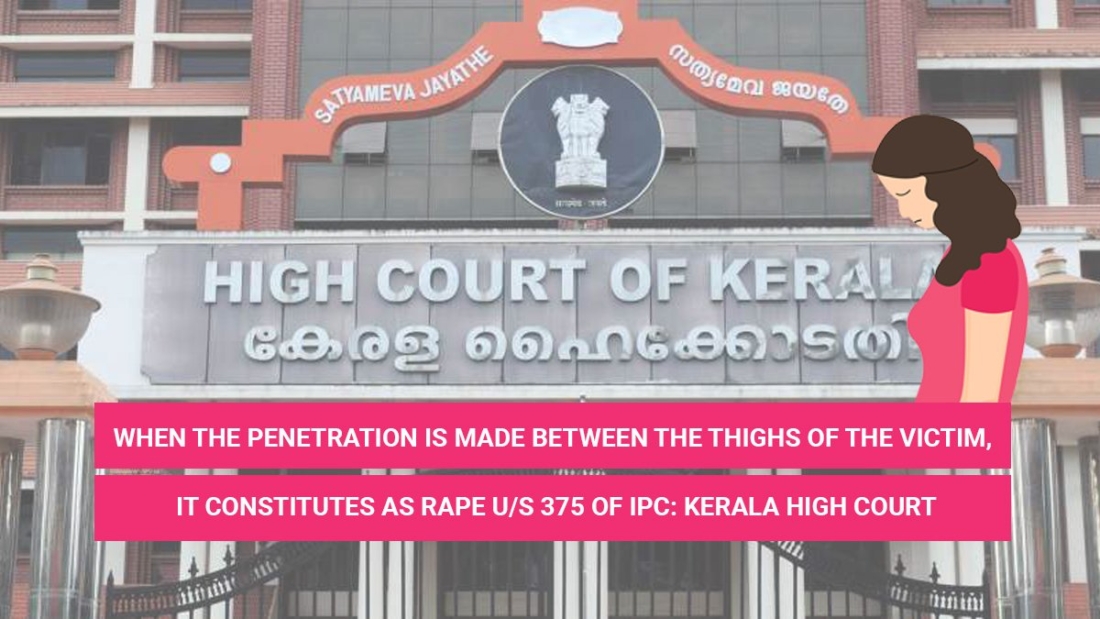The Kerala High Court in Santhosh v. State of Kerala on2nd August 2021 noted that the definition of rape as under section 375 includes all forms of penetrative sexual assault into the vagina, urethra, anus, or any other parts of the body, so manipulated to get the feeling or sensation of an orifice.
The Appellant (Santosh) was sentenced to life imprisonment with the meaning of imprisonment of remainder of natural life and fine, by the Additional Sessions Judge for the offences under Section 11(i) r/w Section 12, 9(l) (m) r/w 10, Section 3(c) r/w 5 (m) and Section 6 of the POCSO Act, Section 375(c) r/w Sections 376(2) (i), 377, 354, 354A(1)(i) of the Indian Penal Code (IPC).
The victim had appeared along with her mother to the medical camp for addressing her constant complaint of stomach pain wherein she revealed incidents of sexual assault committed on her by the accused herein. Charge sheet was filed, and the cognizance was taken by the Special Court. The accused denied all the charges except the age of the prosecutrix which was 11 years old. No evidence was adduced by the defense. The Court found the accused guilty of all charges.
Issue involved:
Whether the sexual act alleged against the Appellant that he had inserted his penis between the thighs of the victim, would attract the offence of rape as defined under section 375 or not?
The High Court observed that:
- Position of law states that it is not necessary to look for any corroboration, when the evidence of prosecutrix is consistent, credible, and otherwise dependable, is well settled.
- Examination of evidence shows that sexual assaults of varying degrees were committed on her by the Appellant on several occasions.
- Even before the Criminal Law Amendment Act, 2013 to the IPC, the term ‘rape’ under Section 375 was given wide interpretation to include that penetration of even slightest degree will be sufficient to attract the offence and even an attempt thereof. The Court relied on State of U.P. v. Babulnath and Chenthamara v. State of Kerala to prove the same.
- After the examination of Section 375, the expression “cause penetration into the vagina, urethra, anus or any part of body of such woman” as used therein, requires wider interpretation to include any orifices naturally present or any part of the body manipulated to simulate a penetration and have the effect/sensation of an orifice.
- Therefore, when the penetration is made between the thighs, it does constitute as rape under Section 375 of IPC.
- As the prosecution failed to prove the age of the victim, the charges under the provisions of POCSO Act and under section 376(2)(i) of IPC become unsustainable.
- The acts of the Appellant come within section 375 and therefore, Section 377 of the IPC would not be attracted.
- The Court partly allowed the appeal and found guilty of offences under Section 376(1) read with Sections 375(c), 354 and 354A (1) (i) of IPC.
– Esha Shah, Paralegal – Child Safety at Work
 Cart is empty
Cart is empty 

